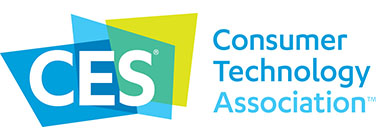ETC covers CES each year beginning with a 3-week series of previews on the top trends, anticipated technologies, and early product announcements. Through the 2017 show, which ran from January 5 through January 8, 2017, ETC published almost 100 original posts and abstracts of articles in twice-daily editions of its ETCentric Daily News Brief. Following the show, ETC produced an extensive report and presentation, both of which are now available online. CES 2017 marked the 50th anniversary of the conference. Since the first Consumer Electronics Show in 1967, more than 700,000 products have debuted in what CTA calls “the world’s gathering place for all who thrive on the business of consumer technologies.”
CES “has served as the proving ground for innovators and breakthrough technologies,” adds CTA, “the global stage where next-generation innovations are introduced to the marketplace.”
“At CES you will get a glimpse of a brilliant future,” writes CTA president and CEO Gary Shapiro in the annual CTA publication, 5 Technology Trends to Watch. “New products, services and technologies are solving real problems and improving the world for global citizens.”
CTA’s report suggests that accessibility will be the “overlay” across their list of trends and tech to watch. These are voice and digital assistants, augmented reality, transportation, digital health and sports technology.
CES 2017 may be best remembered not for one standout product, but for revealing a new and powerful generation of technology and the things it enables. The top five CES hashtags as the show ended perfectly summarize the hot topics of the week: #tech, #iot, #ai, #VR, and #CES. It was also a remarkably balanced show in the sense that almost every product category and business sector reflected applications and the impact of this evolution. Moore’s Law is alive, tomorrow is here, and the pace is accelerating. Three of the most important presentations of the week were made by Nvidia, Intel, and Qualcomm. Their processors deliver the power necessary for this next level of computing.

